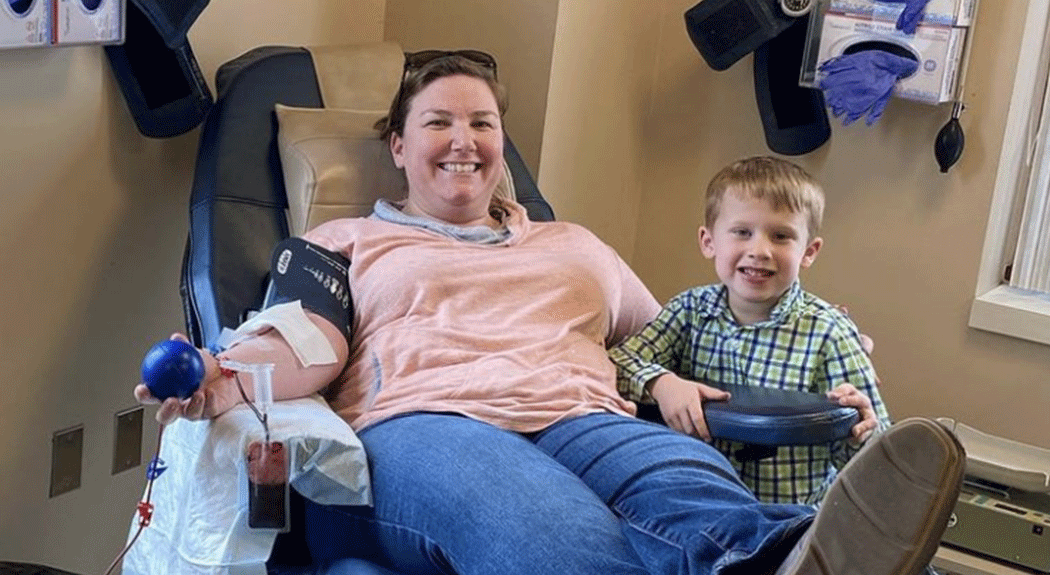Jeanette Brown never imagined that a simple act to get out of class in high school would lead to a lifetime of giving blood. Nearly 26 years ago, Jeanette donated her first unit of blood while in high school. Even though she did not know much about it at the time, the idea of missing class and getting some cookies and juice sounded appealing to the teenager.
After college, Jeanette began working for a blood donor center and she learned first-hand a few important things: the shelf life of blood is very short and that the amount of blood used by someone in need is enormous. Thus began a lifetime of regular blood donation.
For the past 16 years, Jeanette has been donating every eight weeks at Luminis Health Anne Arundel Medical Center’s (LHAAMC) Blood Donor Center in Annapolis, Md. Sometimes Jeanette donates whole blood, plasma and platelets or just red blood cells [see sidebar]. But it doesn’t matter to Jeanette which part of her blood she donates.
“I want to give because I know the blood donation will help the woman with sickle cell disease who is reliant on blood transfusions weekly for a lifetime, for the accident victim, children and adults with acute burns and those with catastrophic diseases, such as cancer or blood clotting disorders,” says Jeanette.
Jeanette says a bonus of giving blood at LHAAMC is that the blood stays in the community.
She knows many need her gift of blood now more than ever. Every two seconds, someone in the United States needs blood and this need is exacerbated by the U.S. experiencing the worst blood shortage in a decade. The dangerously low blood supply levels affect how some hospitals across the country make decisions regarding surgery, including organ transplants.
Blood donor centers are feeling the squeeze: blood drives hosted by companies, schools, places of worship and civic organizations supply roughly half of all blood donations across the U.S. With the pandemic, many of these places have closed with remote work and school resulting in a significant drop in blood donations.
While donating blood is different in today’s world, it is still possible. “Many people don’t know that donating blood today is much easier,” adds Jeanette. “Many of the policies regarding certain donor eligibility criteria have been modified due to the pandemic.” Generally, to donate blood, you must be 17 years old (16 years old with parental permission), weigh 110 lbs., and be in good health.
When asked why she donates blood, Jeanette says, “We are lucky that we have a blood donor center in town, which is easy to get to, has free parking and is easy to access. But even more, it is really easy to give back without spending much time and it cost me nothing—but it means life in the world for someone else. Blood is something that we are all born with, so why not give it to someone who needs it? You can’t plan an accident and you don’t know that you might literally be helping your neighbor by donating at the hospital.”
For an appointment to donate call the LHAAMC Blood Donor Center at 443-481-4215. To have a blood mobile drive at your next function (i.e., community or church function), call 443-481-4272.
Different Types of Blood Donation
There are different types of blood donation, based on blood type and needs.
- The process for giving whole blood is under an hour and can be given every eight weeks/up to six times per year.
- Jeanette’s platelet donation, which helps with the clotting portion of blood, must be transfused within five days of donation. Nearly half of all platelet donations are given to patients undergoing cancer treatment. Platelet donations take about two hours.
- Red blood cell donations, also known as “double red donations,” are the most frequently used blood component and are needed by almost every type of patient requiring transfusion. If donors meet certain criteria, double red allows them to safely donate two units of red cells during one appointment. It is as safe as whole blood donation.
- Plasma donations help treat people in emergency situations to help stop bleeding. It can be given every 28 days/up to 13 times a year.
Source: Association for the Advancement of Blood & Biotherapies




